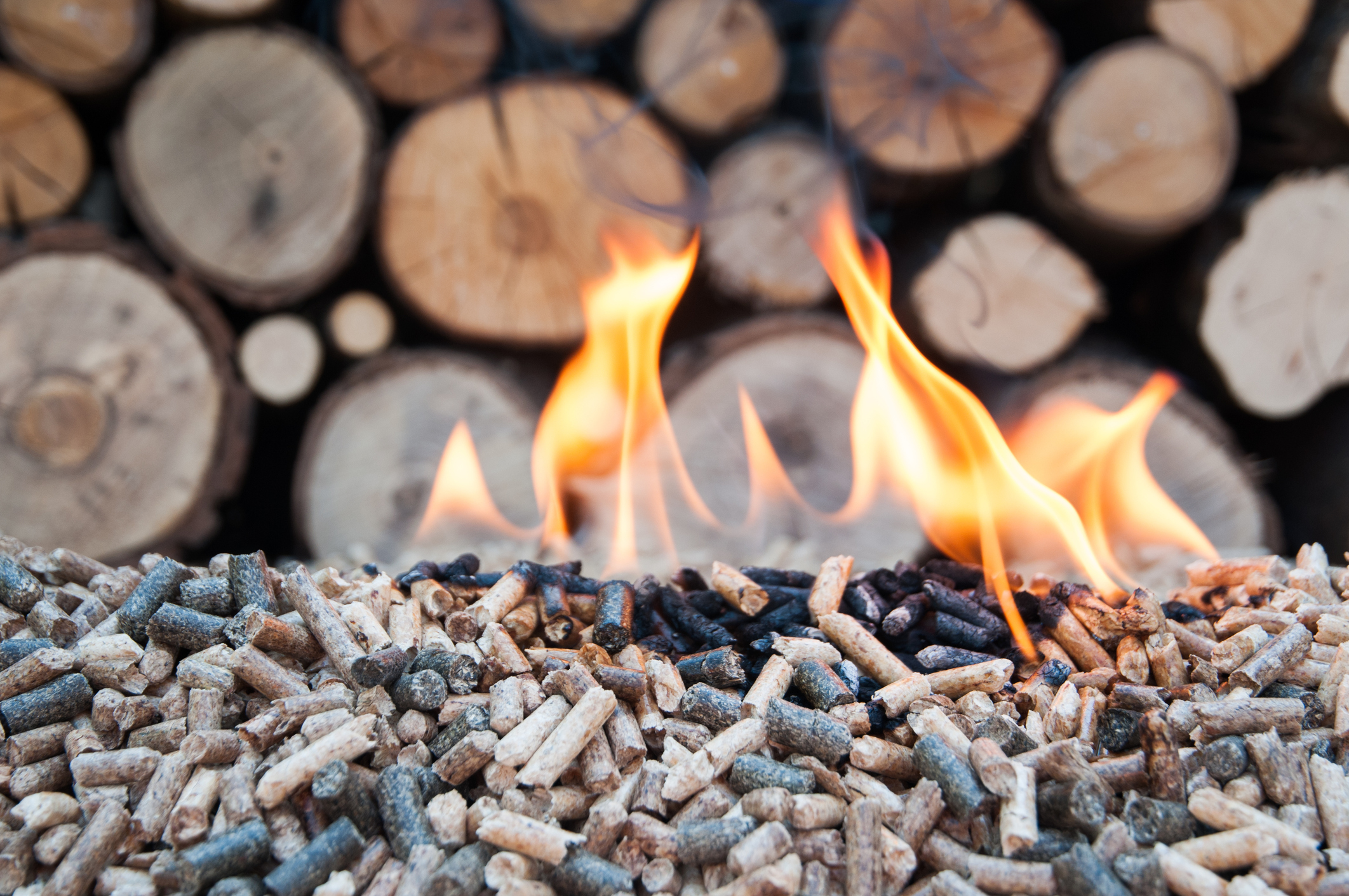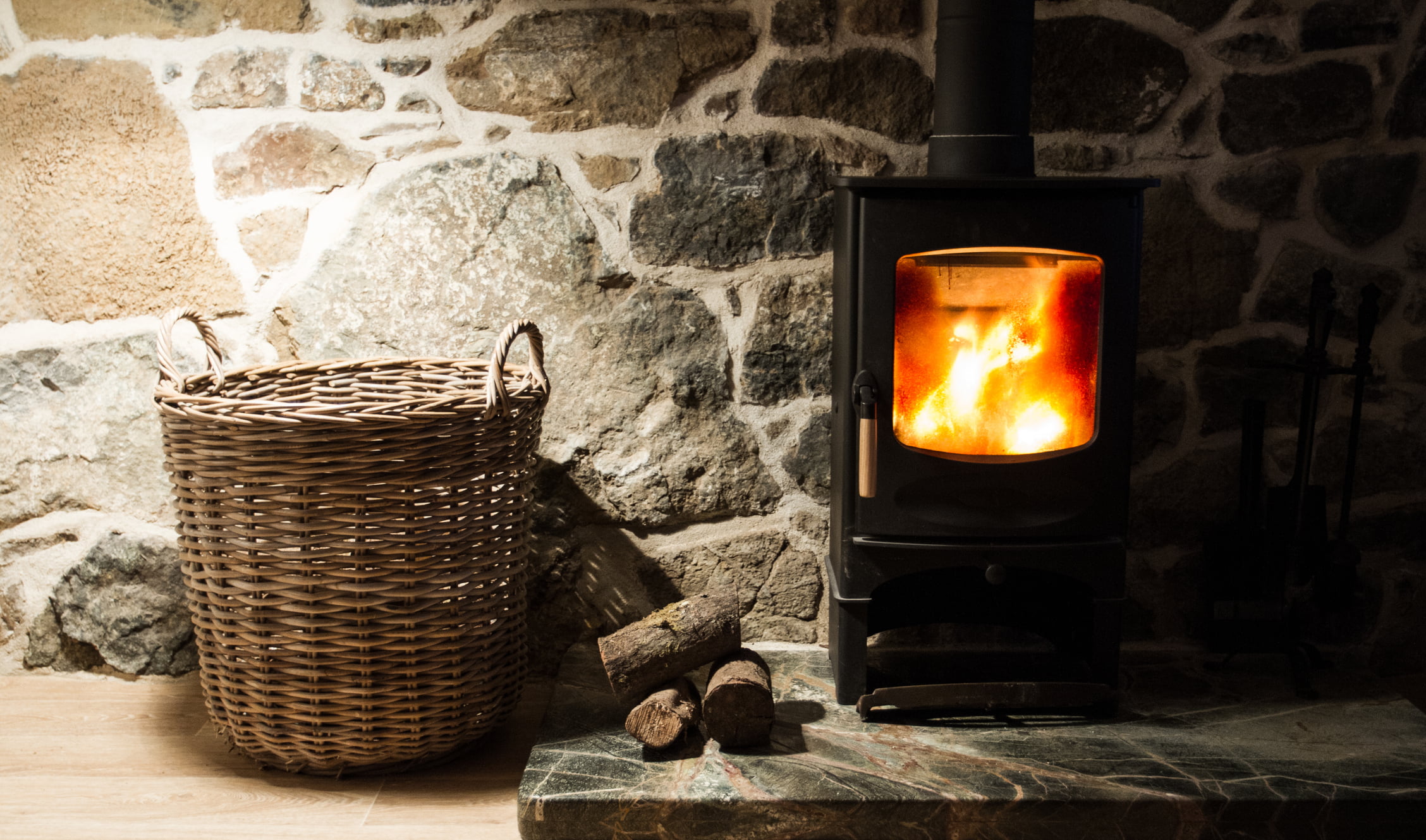Thinking of installing a biomass stove or boiler? There are a few things you might want to consider before making a decision.
Benefits
- Affordable heating fuel
- Financial support
- A lower carbon option
Biomass is a renewable energy source, generated from burning wood, plants and other organic matter, such as manure or household waste. It releases carbon dioxide when burned, but considerably less than fossil fuels.
Biomass heating systems burn wood pellets, chips or logs to provide warmth in a single room or to power central heating and hot water boilers.
A stove burns logs or pellets to heat a single room – and may be fitted with a back boiler to provide water heating as well. A boiler burns logs, pellets or chips, and is connected to a central heating and hot water system. A wood-fuelled biomass boiler could save you up to £1,100 a year compared to an old electric heating system.
Benefits of biomass heating
Affordable heating fuel
Although the price of wood fuel varies considerably, it is often cheaper than other heating options.
A lower carbon option
The carbon dioxide emitted when wood is burned is the same amount that was absorbed over the months and years that the plant was growing. The process is sustainable as long as new plants continue to grow in place of those used for fuel.
There are some carbon emissions caused by the cultivation, manufacture and transportation of the fuel, but as long as the fuel is sourced locally, these are much lower than the emissions from fossil fuels.
If you live in Scotland, take a look at case studies and examples where homeowners have installed a wood-fuelled heating system.
Choosing a wood-fuelled heating system

Costs, savings and financial support
Costs
For biomass boilers, an automatically fed pellet boiler for an average home costs around £18,000, including installation.
Pellet costs depend mainly on the size and method of delivery. If you have room for a large fuel store that will accept several tonnes of pellets at a time, delivered in bulk by tanker, you can keep the cost below £400 per tonne in most parts of the UK.
Logs can be cheaper than pellets, but costs depend on the wood suppliers in your local area, as they can be expensive to transport. If you have room to store more than a year’s worth of logs, you can save money by buying unseasoned logs and letting them season for a year.
Savings
Savings in carbon dioxide emissions are significant – up to 12 tonnes a year – when a biomass boiler replaces a solid (coal) fired system.
Financial savings are more variable. Like oil and LPG fuel, wood pellets can also vary in price. Our table below compares the cost to run a biomass boiler against various heating systems.
If you currently have a modern condensing gas boiler, a biomass boiler is likely to cost you more to run than your current system.
England, Scotland and Wales
Northern Ireland
Financial support
The Boiler Upgrade Scheme (BUS) will support the deployment of low carbon heat technologies in England and Wales.
The BUS will pay a grant of £5,000 for biomass boilers, which is designed to help consumers in England and Wales only overcome the high upfront cost of purchasing and installing a low carbon heating system.
If you live in Scotland, find out more about support available.

Maintenance
Biomass boilers and stoves should be kept clean and swept regularly to remove ash. Ash quantities are generally very low (less than one per cent of fuel volume), but you will still need to empty the ash bin of a wood burning stove or boiler. This is likely to be weekly and never more than once a day. A log fire requires ash removal before every use.
Some appliances, particularly boilers, have self-cleaning systems that will collect ash from the combustion grate and the heat exchanger tubes. If there is no automatic ash cleaning mechanism in place, the boiler will need to be shut down periodically so that this can be done by hand. If the ash is not cleaned out regularly, it will build up and adversely affect combustion conditions, which can lead to boiler failure and shutdown. Some boilers have a mechanism for compressing the ash, which reduces the number of times the ash bin needs to be emptied.
With automatic ash removal and cleaning of the heat exchanger, the only other maintenance requirement will be occasional ash removal and an annual maintenance check. If you have a wood burning stove or boiler, the chimney and flue pipe must be swept regularly to remove all soot deposits and prevent blockage. HETAS recommend that this “should be done at least twice a year, preferably before the heating season to check that the flue has not been blocked by bird’s nests for example and also at the end of the heating season to prevent soot deposits from resting in the chimney during the dormant period”.
Further information on chimney safety can be found in the National Association of Chimney Sweep’s leaflet ‘Heat your Home Safely’. Burning wet wood increases the amount of soot in a chimney and with it the chance of a chimney fire. Logs should always be seasoned (air-dried) for at least a year before being burned.
Further reading
What role does biomass have to play in our energy supply?
We consider biomass a renewable energy source, if the plants or other organic materials being burned are replaced.
BlogIs renewable heat right for your home?
In order to reach net zero targets we’re going to need to dramatically reduce the amount of fossil-fuel generated heating in our…
BlogCould you generate your own renewable energy?
It’s totally possible to generate your own energy from renewables at home. Here’s everything you need to know to get started.